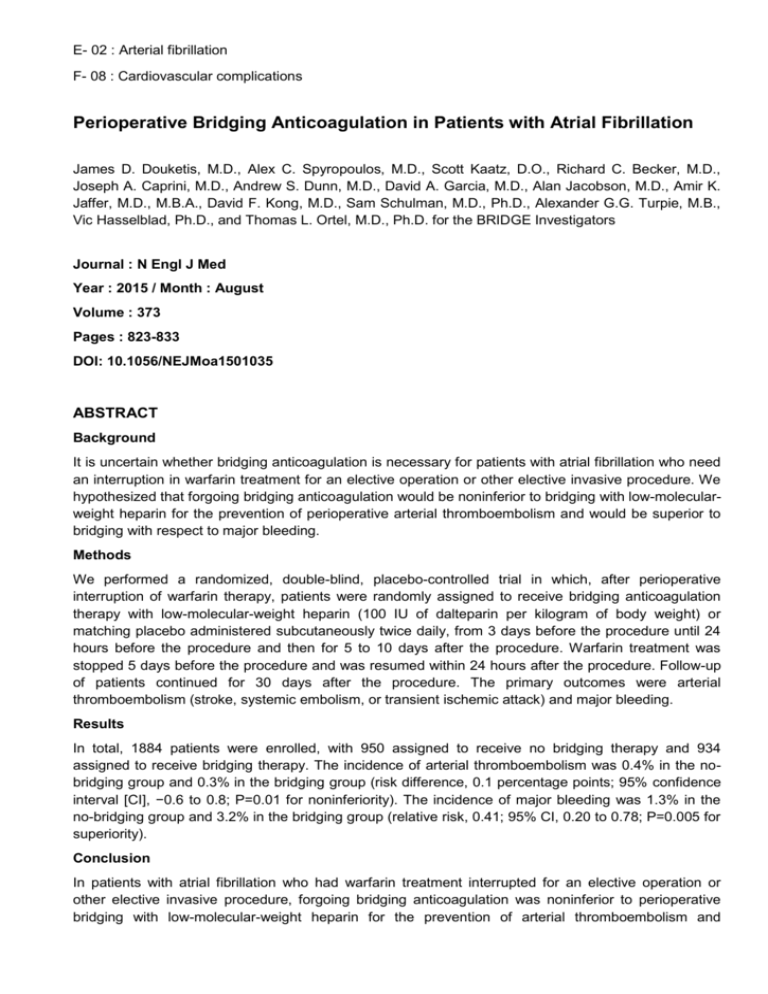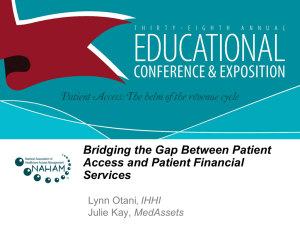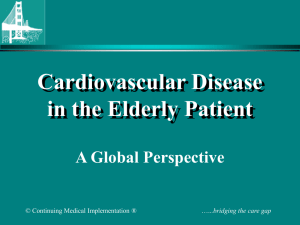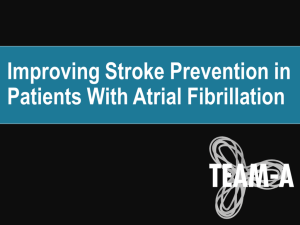DOCX ENG
advertisement

E- 02 : Arterial fibrillation F- 08 : Cardiovascular complications Perioperative Bridging Anticoagulation in Patients with Atrial Fibrillation James D. Douketis, M.D., Alex C. Spyropoulos, M.D., Scott Kaatz, D.O., Richard C. Becker, M.D., Joseph A. Caprini, M.D., Andrew S. Dunn, M.D., David A. Garcia, M.D., Alan Jacobson, M.D., Amir K. Jaffer, M.D., M.B.A., David F. Kong, M.D., Sam Schulman, M.D., Ph.D., Alexander G.G. Turpie, M.B., Vic Hasselblad, Ph.D., and Thomas L. Ortel, M.D., Ph.D. for the BRIDGE Investigators Journal : N Engl J Med Year : 2015 / Month : August Volume : 373 Pages : 823-833 DOI: 10.1056/NEJMoa1501035 ABSTRACT Background It is uncertain whether bridging anticoagulation is necessary for patients with atrial fibrillation who need an interruption in warfarin treatment for an elective operation or other elective invasive procedure. We hypothesized that forgoing bridging anticoagulation would be noninferior to bridging with low-molecularweight heparin for the prevention of perioperative arterial thromboembolism and would be superior to bridging with respect to major bleeding. Methods We performed a randomized, double-blind, placebo-controlled trial in which, after perioperative interruption of warfarin therapy, patients were randomly assigned to receive bridging anticoagulation therapy with low-molecular-weight heparin (100 IU of dalteparin per kilogram of body weight) or matching placebo administered subcutaneously twice daily, from 3 days before the procedure until 24 hours before the procedure and then for 5 to 10 days after the procedure. Warfarin treatment was stopped 5 days before the procedure and was resumed within 24 hours after the procedure. Follow-up of patients continued for 30 days after the procedure. The primary outcomes were arterial thromboembolism (stroke, systemic embolism, or transient ischemic attack) and major bleeding. Results In total, 1884 patients were enrolled, with 950 assigned to receive no bridging therapy and 934 assigned to receive bridging therapy. The incidence of arterial thromboembolism was 0.4% in the nobridging group and 0.3% in the bridging group (risk difference, 0.1 percentage points; 95% confidence interval [CI], −0.6 to 0.8; P=0.01 for noninferiority). The incidence of major bleeding was 1.3% in the no-bridging group and 3.2% in the bridging group (relative risk, 0.41; 95% CI, 0.20 to 0.78; P=0.005 for superiority). Conclusion In patients with atrial fibrillation who had warfarin treatment interrupted for an elective operation or other elective invasive procedure, forgoing bridging anticoagulation was noninferior to perioperative bridging with low-molecular-weight heparin for the prevention of arterial thromboembolism and decreased the risk of major bleeding. (Funded by the National Heart, Lung, and Blood Institute of the National Institutes of Health; BRIDGE ClinicalTrials.gov number, NCT00786474.) COMMENTS The need for bridging anticoagulation during perioperative interruption of antivitamin K treatment has long been uncertain. Warfarin, treatment which is the main oral anticoagulant used in the USA, is typically stopped 5 days before an elective procedure to allow its anticoagulant effect to wane; it is resumed after the procedure, when hemostasis is secured, at which point 5 to 10 days of treatment is required to attain therapeutic anticoagulation. During the interruption of warfarin treatment, bridging anticoagulation therapy, typically with lowmolecular-weight heparin, can be given to minimize the time that patients do not have an adequate level of anticoagulation, with the intent of minimizing the risk of perioperative arterial thromboembolism, such as stroke. The Bridging Anticoagulation in Patients who Require Temporary Interruption of Warfarin Therapy for an Elective Invasive Procedure or Surgery (BRIDGE) trial was designed to address a simple question: in patients with atrial fibrillation, is heparin bridging needed during interruption of warfarin therapy before and after an operation or other invasive procedure? Patients were randomly assigned to receive bridging anticoagulation therapy with dalteparin sodium (100 IU per kilogram of body weight administered subcutaneously twice daily) or to receive no bridging therapy (i.e., a matching subcutaneous placebo) from 3 days before the procedure until 24 hours before the procedure and then for 5 to 10 days after the procedure. 950 patients were assigned to the placebo (no-bridging) group, and 934 patients were assigned to receive bridging treatment with dalteparin. At 30 days after the procedure, the incidence of arterial thromboembolism was 0.4% (four events among 918 patients) in the no-bridging group and 0.3% (three events among 895 patients) in the bridging group (mean between-group difference, 0.1 percentage points; 95% confidence interval [CI], −0.6 to 0.8; P=0.01 for noninferiority; P=0.73 for superiority). Major bleeding occurred in 1.3% of the patients (12 of 918) in the no-bridging group and in 3.2% (29 of 895) in the bridging group, which indicated that no bridging was superior to bridging with regard to major bleeding (relative risk, 0.41; 95% CI, 0.20 to 0.78; P=0.005). To conclude, the authors found that in patients with atrial fibrillation who require perioperative interruption of warfarin treatment for an elective procedure, a strategy of discontinuing warfarin treatment without the use of bridging anticoagulation was noninferior to the use of bridging anticoagulation for the prevention of arterial thromboembolism; in addition, bridging conferred a risk of major bleeding that was nearly triple the risk associated with no bridging. Pr. Jacques CHANARD Professor of Nephrology







